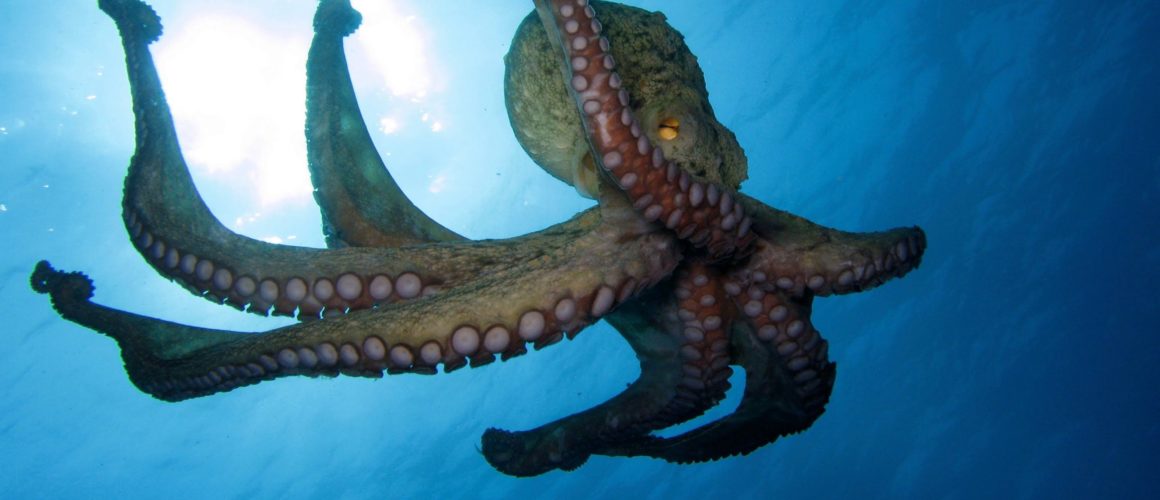Chung W-S, Marshall NJ. 2016 Comparative visual ecology of cephalopods from different habitats. Proc. R. Soc. B 283: 20161346. http://dx.doi.org/10.1098/rspb.2016.1346
Aims
Cephalopods are members of the molluscan class Cephalopoda and include squid, and octopuses. It is believed they are only able to see in black and white however their unusual pupils enable them to detect colour and mimic the colours of their background, camouflaging themselves to escape predators and changing to bright colours to attract a mate.[1]
Researchers at the Queensland Brain Institute sought to investigate the visual pigments within the eyes of cephalopods to determine whether their ability to distinguish a broader spectrum of colours was influenced by habitat and light conditions.
The experiment
Five species of coleoids (Idiosepius notoides , Euprymna tasmanica, Sepioteuthis lessoniana, Sepia plangon and Octopus australis) were collected using a seine net off Stradbroke Island, Queensland and three species of octopus (Callistoctopus dierythraeus , Hapalochlaena maculosa and Octopus tetricus) were collected in Moreton Bay by local fishermen.
Each of the eight animals were maintained in a tank of artificial seawater lit by standard daylight fluorescent tubes and remained for a week. They were then dark-adapted overnight before being anaesthetised in cold sea water and decapitated. Their eye cups were removed and quartered for examination of the retinas using microspectrophotometry (MSP).
Results
A new MSP protocol established in this experiment (alkaline mountant) was found to significantly accelerate the process and made assessment of cephalopod spectral sensitivity more accurate.
Aside from this methodological advance, the results only showed that the 8 species of coleoid examined all possess a single visual pigment, and so “colour-blindness remains a common feature in all examined coastal coleoids so far”.
Concerns
It was not clear what the benefit (if any) of this research was – whether it was somehow to be translated to human medicine (as it was conducted by the Queensland Brain Institute) or having some application for captive conditions for cephalopods
While cephalopods are used as experimental animals in Australia, ethical guidelines for the use and handling of animals in science do not typically include cephalopods. The Australian Code for the Care and Use of Animals for Scientific Purposes applies to the care and use of all live non-human vertebrates and cephalopods, but reporting on their use is not mandatory.
Yet, these animals have been shown to find their way through a maze, solve problems and remember the solutions. They are believed to have the cognitive ability comparable with a dog.[2] Furthermore, the fact that these animals are able to detect and react to colour without actually seeing it suggests that they have sensory abilities beyond our current understanding. It might therefore be conceivable that they may be capable of more suffering than previously assumed.
Details
- Title: Comparative visual ecology of cephalopods from different habitats.
- Author/s: Wen-Sung Chung and N. Justin Marshall
- Institution: Queensland Brain Institute, The University of Queensland, St Lucia 4072
- Funding Source: Australian Research Council and the Airforce Office of Scientific Research.
- Reference: http://dx.doi.org/10.1098/rspb.2016.1346
